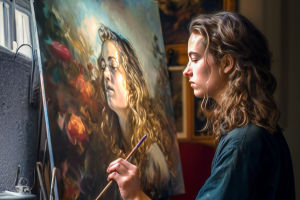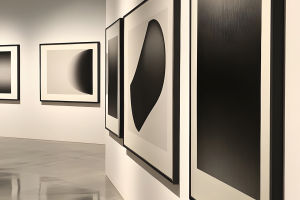As children, many of us were encouraged to draw, paint, and create without any limitations. We were free to express ourselves in ways that were simple yet filled with joy. But as we grow older, something changes.
The natural artistic talents we once had seem to fade, leaving us wondering, "What happened to that creativity?" If you've ever felt like your artistic abilities have disappeared with age, you're not alone.
Many of us experience this shift. In this article, we'll explore why children's artistic gifts often diminish as they grow older, and what we can do to bring them back to life.
1. The Pressure of Expectations
When we were children, the act of creating art was often free from judgment. Whether it was a stick figure or a colorful abstract design, the focus was on the process and the joy of creating. However, as we grow older, the pressure to conform and meet certain standards begins to take its toll. School and society often introduce the idea that art must be "perfect," and this can stifle the creativity that once flowed so freely.
As we become more aware of the world around us, we start comparing our work to others, leading to self-doubt. We also begin to see art as something that requires skill and technique rather than personal expression. This shift from creativity to perfectionism can remove the natural flow of ideas that children once had. We may stop drawing or painting altogether because we fear our work won't measure up to the standards we set for ourselves.
2. Loss of Time and Focus
Another factor that contributes to the fading of our artistic talents is the loss of time. As children, we have the luxury of time—time to play, explore, and create without the constraints of schedules.
As we grow older, however, our lives become more structured, with responsibilities like school, work, and social obligations taking up more of our time. The hours that we once spent with crayons, markers, or paintbrushes now get replaced by deadlines, meetings, and chores.
In our busy adult lives, it's easy to lose touch with the creative side of ourselves. Many of us stop making time for art because it seems less urgent or less important than the demands of work and other responsibilities. However, this loss of focus and time can lead to the gradual fading of our artistic abilities. Without practice and dedication, creativity becomes a distant memory.
3. Fear of Failure and Criticism
As children, we don't worry much about what others think of our art. We draw because it feels good, because we enjoy expressing ourselves. But as we grow older, we become more aware of others' opinions and begin to fear failure. This fear can prevent us from even attempting to create, as we worry about being judged or criticized.
The truth is, the fear of failure is one of the biggest obstacles to creativity. When we stop taking risks and experimenting with new ideas, our artistic abilities start to decline. In fact, the more we fear failure, the less we create, and the more disconnected we become from our natural creativity.
4. The Role of Education
Another key factor in the decline of artistic talent as we age is the way art is taught in schools. While many schools offer art classes, the approach is often very structured, focusing on technique rather than creative expression. This shift towards "correct" methods can discourage students from exploring their own artistic style or experimenting with new techniques.
For many, the structured nature of art education kills the joy of creating. Instead of feeling free to explore, students may feel restricted by the rules and expectations placed on them. This can result in a decline in interest in art as a whole. What once felt like a fun, personal activity becomes something that requires approval and validation.
5. Rekindling Creativity: How to Rediscover Your Artistic Talents
If you've lost touch with your artistic side, it's never too late to rekindle that spark. The first step is to let go of any self-imposed pressure to create "perfect" art. Remember, art is about personal expression, not about meeting certain standards. Allow yourself the freedom to create without judgment.
Start by setting aside small amounts of time each day or week to engage in creative activities. Whether it's doodling in a notebook, taking a painting class, or exploring photography, the key is to make time for it. Even if it's just for a few minutes, the act of creating can help you reconnect with your artistic side.
Another way to reignite your creativity is to embrace the idea of failure as a part of the process. Don't be afraid to experiment and make mistakes. Often, the most amazing ideas come from the things we don't expect. Creativity thrives when we allow ourselves to take risks and push boundaries.
6. Conclusion: Embrace Your Inner Artist
The artistic talents we have as children are never truly gone—they may just be buried under layers of fear, expectations, and busy schedules. With a little effort and a shift in mindset, we can all reconnect with our creative selves.
Whether you're an experienced artist or someone who hasn't picked up a paintbrush in years, it's never too late to start creating again. The key is to embrace the process, let go of perfection, and enjoy the freedom of self-expression.
So, have you lost touch with your artistic side? Are you ready to rediscover it? Let us know how you plan to bring back your creativity and embrace your inner artist once again!


